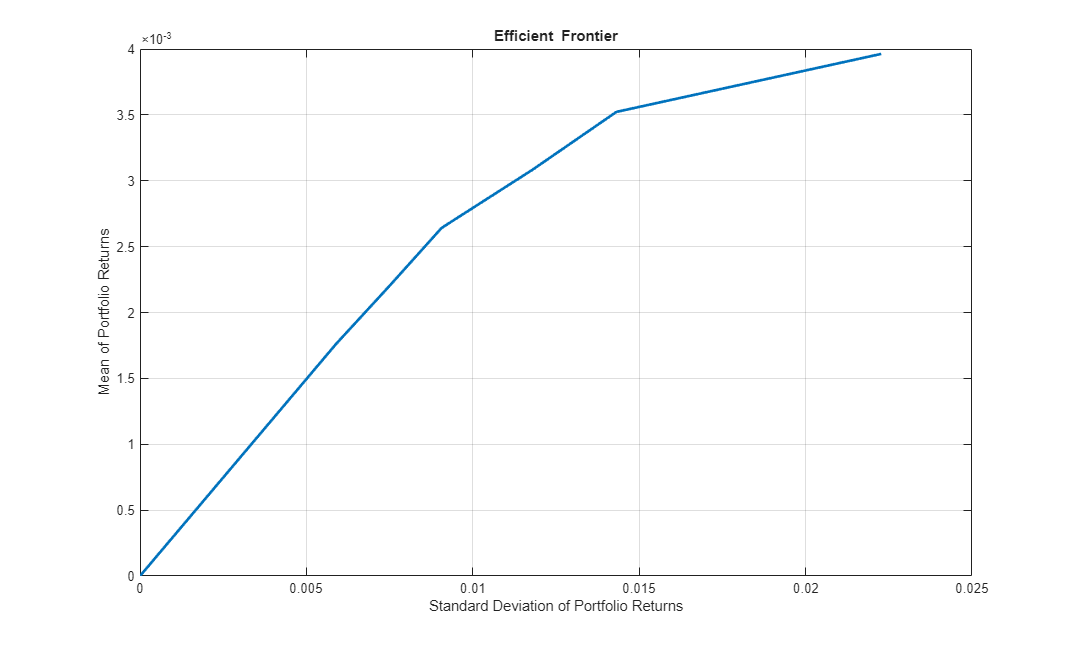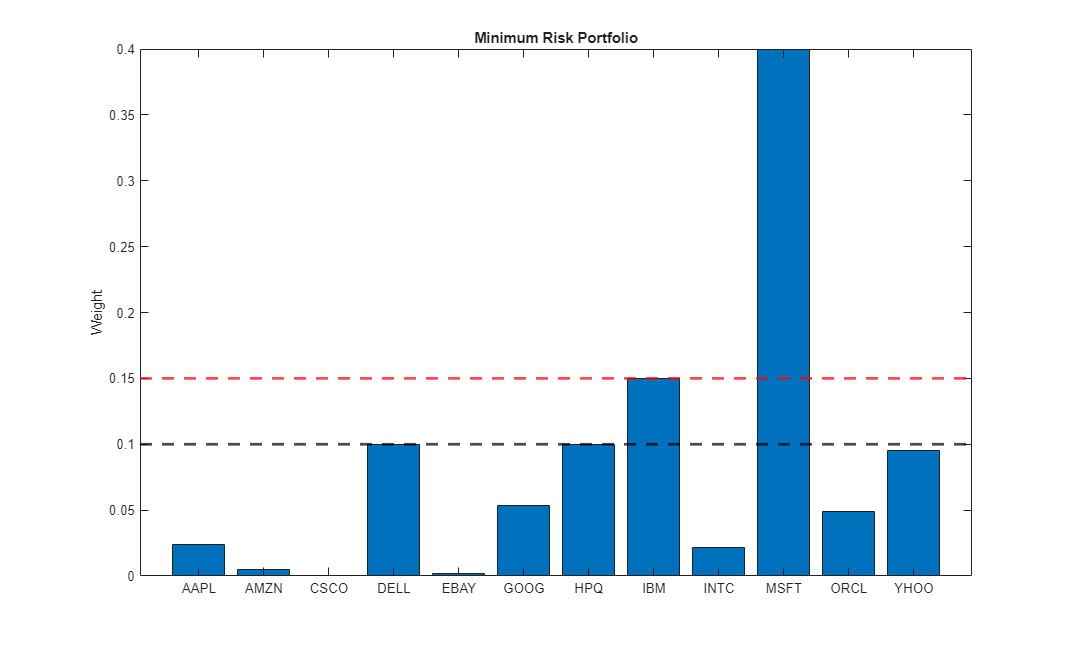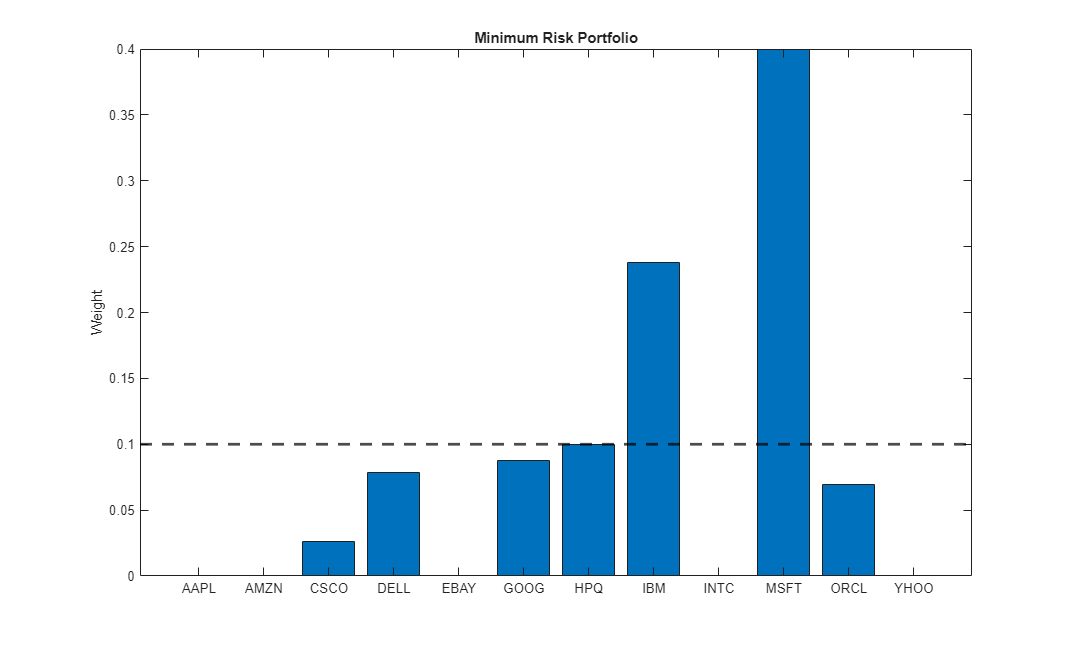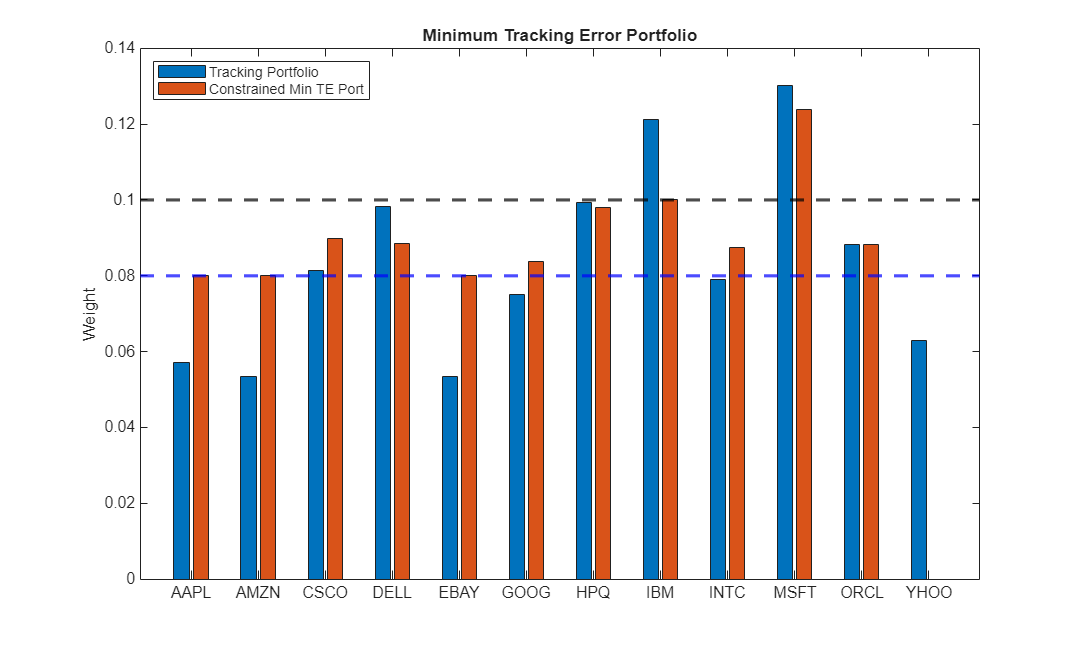setConditionalBudget
Description
obj = setConditionalBudget(obj,ConditionalBudgetThreshold,ConditionalUpperBudget)Portfolio,
PortfolioCVaR, or PortfolioMAD
objects. If the weight of an asset exceeds the
ConditionalBudgetThreshold value, the weight of that
asset is added to the aggregate sum that is bound by the
ConditionalUpperBudget value. For more information, see
Conditional Budget Constraints .
This constraint supports the Undertakings for Collective Investment in Transferable Securities (UCITS) Directive. The UCITS asset regulation states that any investments in excess of 5% must not exceed 40% of the total portfolio. This constraint is a conditional budget constraint. For more information, see Undertakings for Collective Investment in Transferable Securities and Adding Constraints to Satisfy UCITS Directive.
For details on the respective workflows when using these different objects, see Portfolio Object Workflow, PortfolioCVaR Object Workflow, and PortfolioMAD Object Workflow.
Examples
Input Arguments
Output Arguments
More About
Tips
You can also use dot notation to set up the conditional budget constraints.
obj = obj.setConditionalBudget(ConditionalBudgetThreshold,ConditionalUpperBudget);
Version History
Introduced in R2024b
See Also
Topics
- Adding Constraints to Satisfy UCITS Directive
- Conditional Budget Constraints
- Conditional Budget Constraints
- Conditional Budget Constraints
- Supported Constraints for Portfolio Optimization Using Portfolio Objects
- Supported Constraints for Portfolio Optimization Using PortfolioCVaR Object
- Supported Constraints for Portfolio Optimization Using PortfolioMAD Object



